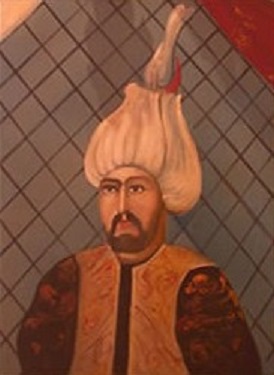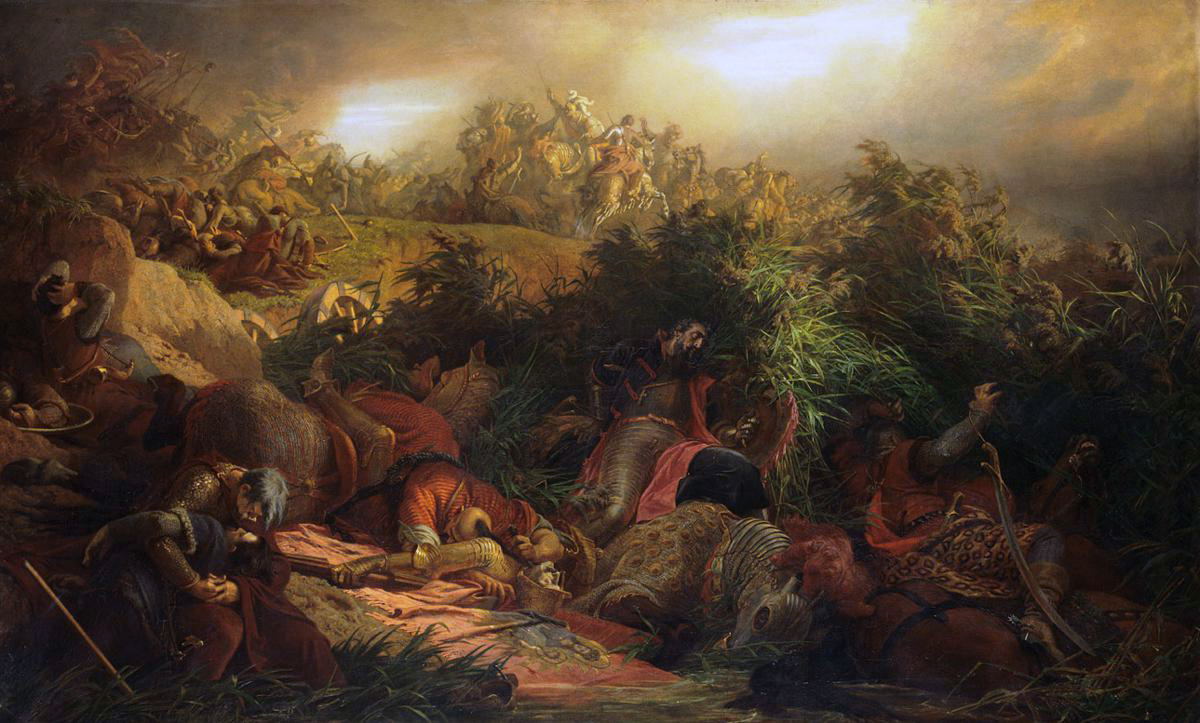|
Nakkaş Osman
Nakka Osman (sometimes called Osman the Miniaturist) was the chief Ottoman miniature, miniaturist for the Ottoman Empire during the later half of the sixteenth century. The dates of his birth and death are poorly known, but most of his works are dated to the last quarter of the sixteenth century. The oldest known illustrations of Nakkaş Osman's were made between 1560 and 1570 for a Turkish translation of the epic Persian poem ''Shahnameh, Shahnama'' by Ferdowsi. He is known to have been the chief illustrator of the various official histories written by Seyyid Lokman for Murad III that were produced in this era, including the ''Zafername'' (''Book of Victories''), the ''Şahname-ı Selim Han'' (''Book of Kings of Selim II, Selim Khan''). and the ''Şehinşahname'' (''Book of King of Kings''). In 1582 he worked on the astrological ''The Book of Felicity, Book of Felicity'', and around 1585 he was one of the illustrators of the ''Siyer-i Nebi'', an epic on the life of Muhammad writt ... [...More Info...] [...Related Items...] OR: [Wikipedia] [Google] [Baidu] |
Ottoman Miniature
Ottoman miniature ( Turkish: ''Osmanlı minyatürü'') is a style of illustration found in Ottoman manuscripts, often depicting portraits or historic events. Its unique style was developed from multiple cultural influences, such as the Persian Miniature art, as well as Byzantine and Mongol art. It was a part of the Ottoman book arts, together with illumination (''tezhip''), calligraphy (''hat''), marbling paper (''ebru''), and bookbinding (''cilt''). The words ''taswir'' or ''nakish'' were used to define the art of miniature painting in Ottoman Turkish. While Ottoman miniatures have been very much inspired by Persian miniatures, Ottoman artisans developed a unique style that separated themselves from their Persian influences. Ottoman miniatures are known specifically for their factual accounts of things such as military events, whereas Persian miniatures were more focused on being visually interesting. The inclusion of miniatures in Ottoman manuscripts was more for the purpo ... [...More Info...] [...Related Items...] OR: [Wikipedia] [Google] [Baidu] |
Sokollu Mehmed Pasha
Sokollu Mehmed Pasha (; ; ; 1505 – 11 October 1579) was an Ottoman statesman of Serb origin most notable for being the Grand Vizier of the Ottoman Empire. Born in Ottoman Herzegovina into an Orthodox Christian family, Mehmed was recruited as a young boy as part of so called "blood tax" to serve as a janissary to the Ottoman devşirme system of recruiting Christian boys to be raised as officers or administrators for the state. He rose through the ranks of the Ottoman imperial system, eventually holding positions as commander of the imperial guard (1543–1546), High Admiral of the Fleet (1546–1551), Governor-General of Rumelia (1551–1555), Third Vizier (1555–1561), Second Vizier (1561–1565), and as Grand Vizier (1565–1579, for a total of 14 years, three months, 17 days) under three sultans: Suleiman the Magnificent, Selim II, and Murad III.Imamović, Mustafa (1996). Historija Bošnjaka. Sarajevo: BZK Preporod. He was assassinated in 1579, ending his near 15-years ... [...More Info...] [...Related Items...] OR: [Wikipedia] [Google] [Baidu] |
Hejaz
Hejaz is a Historical region, historical region of the Arabian Peninsula that includes the majority of the western region of Saudi Arabia, covering the cities of Mecca, Medina, Jeddah, Tabuk, Saudi Arabia, Tabuk, Yanbu, Taif and Al Bahah, Al-Bahah. It is thus known as the "Western Province",Mackey, p. 101. "The Western Province, or the Hejaz[...]" and it is bordered in the west by the Red Sea, in the north by Jordan, in the east by the Najd, and in the south by Greater Yemen, Yemen. Its largest city is Jeddah, which is the second-largest city in Saudi Arabia, with Mecca and Medina, respectively, being the third- and fourth-largest cities in the country. As the location of the Holy city, holy cities of Mecca and Medina, respectively the first and second holiest sites in Islam, the Hejaz is significant in the Arabo-Islamic historical and political landscape. This region is the most populated in Saudi Arabia, and Arabic is the predominant language, as in the rest of Saudi Arabia, ... [...More Info...] [...Related Items...] OR: [Wikipedia] [Google] [Baidu] |
Bedouin
The Bedouin, Beduin, or Bedu ( ; , singular ) are pastorally nomadic Arab tribes who have historically inhabited the desert regions in the Arabian Peninsula, North Africa, the Levant, and Mesopotamia (Iraq). The Bedouin originated in the Syrian Desert and Arabian Desert but spread across the rest of the Arab world in West Asia and North Africa after the spread of Islam. The English word ''bedouin'' comes from the Arabic ''badawī'', which means "desert-dweller", and is traditionally contrasted with ''ḥāḍir'', the term for sedentary people. Bedouin territory stretches from the vast deserts of North Africa to the rocky ones of the Middle East. They are sometimes traditionally divided into tribes, or clans (known in Arabic as ''ʿašāʾir''; or ''qabāʾil'' ), and historically share a common culture of herding camels, sheep and goats. The vast majority of Bedouins adhere to Islam, although there are some fewer numbers of Christian Bedouins present in the Fertile Cres ... [...More Info...] [...Related Items...] OR: [Wikipedia] [Google] [Baidu] |
Tahmasp I
Tahmasp I ( or ; 22 February 1514 – 14 May 1576) was the second shah of Safavid Iran from 1524 until his death in 1576. He was the eldest son of Shah Ismail I and his principal consort, Tajlu Khanum. Tahmasp ascended the throne after the death of his father on 23 May 1524. The first years of Tahmasp's reign were marked by civil wars between the Qizilbash leaders until 1532, when he asserted his authority and began an absolute monarchy. He soon faced a long-lasting war with the Ottoman Empire, which was divided into three phases. The Ottoman sultan, Suleiman the Magnificent, tried to install his own candidates on the Safavid throne. The war ended with the Peace of Amasya in 1555, with the Ottomans gaining sovereignty over Iraq, much of Kurdistan, and western Georgia. Tahmasp also had conflicts with the Uzbeks of Bukhara over Khorasan, with them repeatedly raiding Herat. In 1528, at the age of fourteen, he defeated the Uzbeks in the Battle of Jam by using artillery. Ta ... [...More Info...] [...Related Items...] OR: [Wikipedia] [Google] [Baidu] |
Safavid
The Guarded Domains of Iran, commonly called Safavid Iran, Safavid Persia or the Safavid Empire, was one of the largest and longest-lasting Iranian empires. It was ruled from 1501 to 1736 by the Safavid dynasty. It is often considered the beginning of modern Iranian history, as well as one of the gunpowder empires. The Safavid Shāh Ismā'īl I established the Twelver denomination of Shīʿa Islam as the official religion of the empire, marking one of the most important turning points in the history of Islam. An Iranian dynasty rooted in the Sufi Safavid order founded by sheikhs claimed by some sources to be of Kurdish origin, it heavily intermarried with Turkoman, Georgian, Circassian, and Pontic GreekAnthony Bryer. "Greeks and Türkmens: The Pontic Exception", ''Dumbarton Oaks Papers, Vol. 29'' (1975), Appendix II "Genealogy of the Muslim Marriages of the Princesses of Trebizond" dignitaries and was Turkish-speaking and Turkified;, "The origins of the Safavids are ... [...More Info...] [...Related Items...] OR: [Wikipedia] [Google] [Baidu] |
Suleiman The Magnificent
Suleiman I (; , ; 6 November 14946 September 1566), commonly known as Suleiman the Magnificent in the Western world and as Suleiman the Lawgiver () in his own realm, was the List of sultans of the Ottoman Empire, Ottoman sultan between 1520 and his death in 1566. Under his administration, the Ottoman Empire ruled over at least 25 million people. After succeeding his father Selim I on 30 September 1520, Suleiman began his reign by launching military campaigns against the Christendom, Christian powers of Central and Eastern Europe and the Mediterranean; Siege of Belgrade (1521), Belgrade fell to him in 1521 and Siege of Rhodes (1522), Rhodes in 1522–1523, and at Battle of Mohács, Mohács in 1526, Suleiman broke the strength of the Kingdom of Hungary in the Middle Ages, Kingdom of Hungary. Presiding over the apex of the Ottoman Empire's economic, military, and political strength, Suleiman rose to become a prominent monarch of 16th-century Europe, as he personally led Arm ... [...More Info...] [...Related Items...] OR: [Wikipedia] [Google] [Baidu] |
Surname-i Hümayun
The Surname-i Hümayun (Ottoman Turkish and ) were albums that commemorated celebrations in the Ottoman Empire in pictorial and textual detail. Such celebrations included mainly imperial weddings and circumcision festivals. These albums were commissioned by the Ottoman Imperial family, usually by the Sultan presiding at the time. The Surnames recount the festivities in order of when the events took place, which includes processions, grand entrances of the Sultan, feasts, entertainers, musicians, dancers, gift giving, firework displays, circumcision and wedding ceremonies. Although many of the Surnames were made to celebrate circumcisions of Ottoman princes, the first Surname was commissioned in 1524 for a wedding ceremony. Importance Many reasons contributed to the formulation of these festival albums. Firstly, by commissioning the albums to be created in celebration of certain processions, it displayed the grandeur of the event. Colourful paintings that filled the pages of the ... [...More Info...] [...Related Items...] OR: [Wikipedia] [Google] [Baidu] |
Süleymaniye Mosque
The Süleymaniye Mosque (, ) is an Ottoman imperial mosque located on the Seven hills of Istanbul, Third Hill of Istanbul, Turkey. The mosque was commissioned by Suleiman the Magnificent () and designed by the imperial architect Mimar Sinan. An inscription specifies the foundation date as 1550 and the inauguration date as 1557, although work on the complex probably continued for a few years after this. The Süleymaniye Mosque is one of the best-known sights of Istanbul and from its location on the Third Hill it commands an extensive view of the city around the Golden Horn. It is considered a masterpiece of Ottoman architecture and one of Mimar Sinan's greatest works. It is the largest Ottoman Empire, Ottoman-era mosque in the city. Like other Ottoman imperial foundations, the mosque is part of a larger ''külliye'' (religious and charitable complex) which included madrasas, a Imaret, public kitchen, and a Bimaristan, hospital, among others. Behind the ''qibla'' wall of the mo ... [...More Info...] [...Related Items...] OR: [Wikipedia] [Google] [Baidu] |
Nadr Ibn Al-Harith
Al-Naḍr ibn al-Ḥārith ibn ʿAlqama ibn Kalada ibn ʿAbd Manāf ibn Abd al-Dār ibn Quṣayy (, d. 624 CE) was an Arab pagan physician who is considered one of the greatest Qurayshi opponents to the Islamic prophet Muhammad. He was captured after the Battle of Badr as one of the pagan fighters and flag-bearers. He was sentenced to death for his participation and persecution of Muhammed and Muslims in Mecca. The execution was conducted by Ali by beheading him in front of Muhammad and his companions at as-Safra' before they had returned to Medina from the battle. According to the '' Sīrah'', two captives, al-Naḍr ibn al-Ḥārith and ʿUqbah ibn Abī Muʿayṭ, were executed during this event, the former by Ali and the latter by Asim ibn Thabit. According to Professor Sarah Bowen Savant, the event is claimed to have inspired Nadr's sister, Qutayla ukht al-Nadr, to compose an elegy on his death, upbraiding Muhammad for the execution. Life During the Meccan period, Nadr ... [...More Info...] [...Related Items...] OR: [Wikipedia] [Google] [Baidu] |





